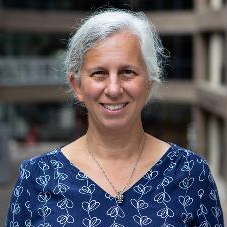Equality, Diversity and Inclusion in STEM for a Sustainable Future
A special issue of Sustainability (ISSN 2071-1050).
Deadline for manuscript submissions: closed (31 March 2022) | Viewed by 50640
Special Issue Editors
Interests: harmonic and functional analysis; engineering education
Interests: engineering education; spatial ability in STEM learning; spatial ability development and gender; problem-based learning and intellectual development
Interests: social responsibility and inclusion; gender in STEM; gender and ICT; technological ecosystems; knowledge management; human–computer interaction
Special Issues, Collections and Topics in MDPI journals
Special Issue Information
Dear Colleagues,
There is evidence that diversity plays a crucial role in both companies and academia related to the science, technology, engineering, and mathematics (STEM) fields. Forbes, in a dedicated survey addressed to 321 executives at large global enterprises, found that is commonly agreed that a diverse and inclusive workforce is among the most important factors for driving innovation and promoting creativity (85% of respondents). This can be partially explained considering the teamwork nature of STEM. That is, only in very few cases can new solutions rely on a single genius, and usually innovations are shared and built upon teamwork. Therefore, fostering different views and reducing a homogeneous environment is key to a sustainable future. Indeed, gender equality is one of the 17 UN Sustainable Development Goals: “Gender bias is undermining our social fabric and devalues all of us. It is not just a human rights issue; it is a tremendous waste of the world’s human potential. By denying women equal rights, we deny half the population a chance to live life at its fullest. Political, economic and social equality for women will benefit all the world’s citizens. Together we can eradicate prejudice and work for equal rights and respect for all.”—Goal 5. As a sub-goal, the importance of giving women access to technology is highlighted.
Ensuring diversity becomes crucial for the recruitment steps into STEM studies and careers. Evidence suggests that the number of women resigning from technological job positions remains unacceptably high. For example, in western countries, only 20% or less of graduating engineers are female, and often fewer than 10% are part of the engineering workforce.
To increase diversity, equality, and inclusion in STEM education, many different approaches can be implemented at different levels and to different target groups. This Special Issue aims to address mainly research related to:
- Theoretical insight into the reasons for this imbalance;
- Empirical evidence, experimental approaches, and best practices of recruitment and retention in STEM education;
- Ideas and policy to support gender balance careers in a STEM context.
Prof. Dr. Anita Tabacco
Dr. Gavin Duffy
Dr. Alicia García-Holgado
Prof. Dr. Rachel Riedner
Guest Editors
Manuscript Submission Information
Manuscripts should be submitted online at www.mdpi.com by registering and logging in to this website. Once you are registered, click here to go to the submission form. Manuscripts can be submitted until the deadline. All submissions that pass pre-check are peer-reviewed. Accepted papers will be published continuously in the journal (as soon as accepted) and will be listed together on the special issue website. Research articles, review articles as well as short communications are invited. For planned papers, a title and short abstract (about 100 words) can be sent to the Editorial Office for announcement on this website.
Submitted manuscripts should not have been published previously, nor be under consideration for publication elsewhere (except conference proceedings papers). All manuscripts are thoroughly refereed through a single-blind peer-review process. A guide for authors and other relevant information for submission of manuscripts is available on the Instructions for Authors page. Sustainability is an international peer-reviewed open access semimonthly journal published by MDPI.
Please visit the Instructions for Authors page before submitting a manuscript. The Article Processing Charge (APC) for publication in this open access journal is 2400 CHF (Swiss Francs). Submitted papers should be well formatted and use good English. Authors may use MDPI's English editing service prior to publication or during author revisions.
Keywords
- STEM education
- STEM career
- gender diversity
- gendered innovation
- equality, diversity, and inclusion








